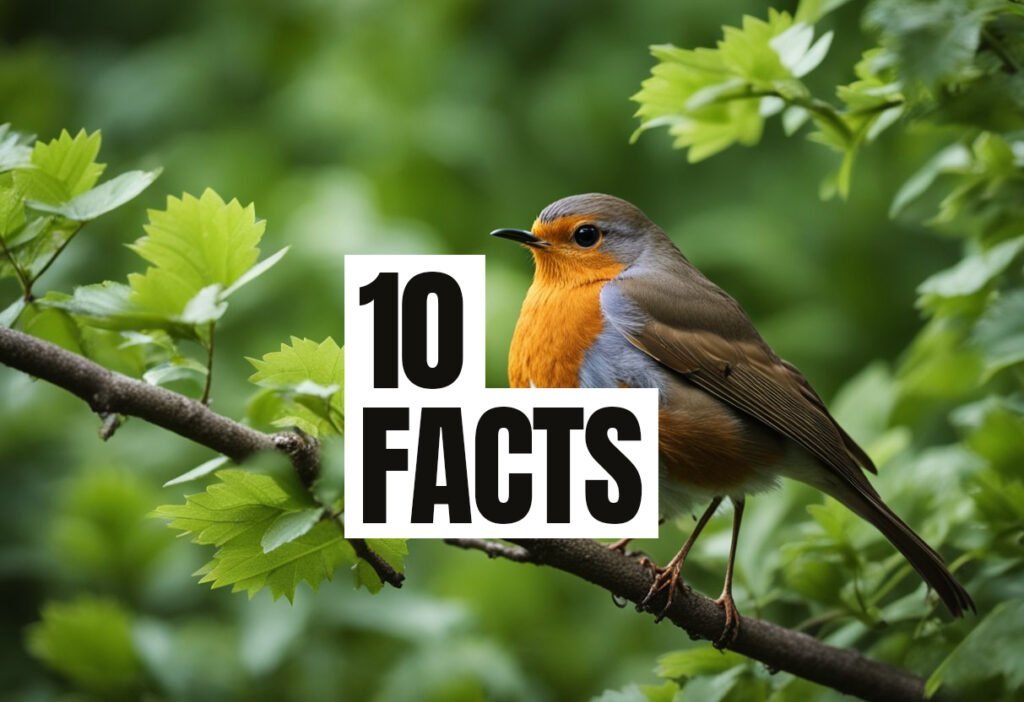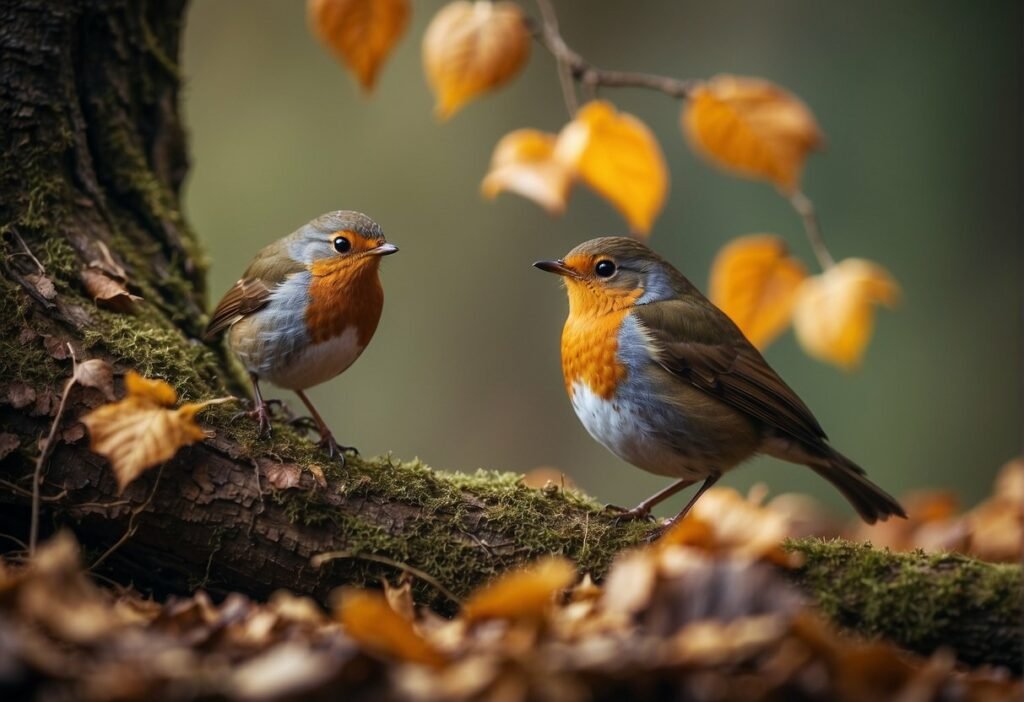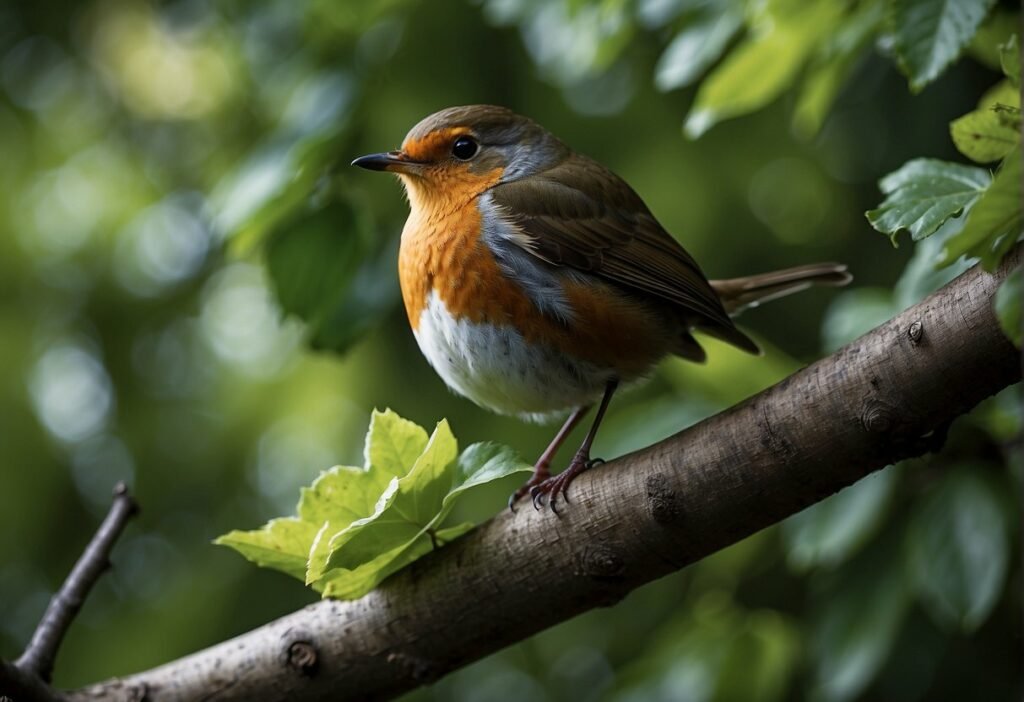Robins are a common bird found throughout North America. They are known for their distinctive red breast and cheerful song. One question many people have about robins is when they lay their eggs.

The American robin, also known by its scientific name Turdus migratorius, typically lays its eggs in the early spring. This timing allows the chicks to hatch and grow during the warmer months when food is plentiful. However, the exact timing can vary depending on factors such as climate and location.
For those interested in observing robins during their nesting season, it is important to keep in mind that they are a protected species under the Migratory Bird Treaty Act. This means that disturbing their nests or eggs is illegal without a permit. With that in mind, there are still plenty of opportunities to learn about and appreciate these fascinating birds during their breeding season.
Robin Reproduction Cycle
Robins are one of the most common birds in North America, and they are known for their beautiful song and bright orange breast. One of the most interesting things about robins is their reproduction cycle. In this section, we will explore the different stages of the robin reproduction cycle.
Nesting Behavior
Female robins usually begin breeding in the spring, between April and August. During the breeding season, they will typically lay two to three clutches of eggs, with each clutch containing three to five eggs. Female robins are responsible for building the nest, which is usually constructed of twigs, grass, and other nesting material. The nest is typically located in a tree or shrub, and female robins will often use the same nest site for multiple broods.
Egg Laying and Incubation
Once the nest is built, the female robin will lay one egg per day until the clutch is complete. The eggs are bright blue and are often described as “sky blue.” The incubation period for robin eggs is approximately 13 days. During this time, the female robin will sit on the eggs to keep them warm and to ensure that they hatch properly.
After the eggs hatch, the female robin will continue to care for the young birds for several weeks, until they are ready to leave the nest. Male robins will also help with feeding the young birds, but their primary role is to defend the nest site from predators and other birds.
In conclusion, the robin reproduction cycle is a fascinating process that involves nesting, egg laying, and incubation. Female robins are responsible for building the nest and laying the eggs, while both male and female robins work together to care for the young birds. By understanding the robin reproduction cycle, we can gain a greater appreciation for these beautiful birds and the important role they play in our ecosystem.
Caring for the Young
After hatching, the baby robins, also known as nestlings, require constant care and attention from their parents. The hatchling and fledgling stages are critical periods in the development of young robins.
Hatchling and Fledgling Stages
During the hatchling stage, the baby robins are completely dependent on their parents for food and warmth. The male robin and female robin take turns incubating the eggs and caring for the hatchlings. The hatchlings are born naked and blind, and their eyes do not open until they are about 3-4 days old.
As the hatchlings grow, they enter the fledgling stage, during which they start to develop feathers and become more active. Fledglings are still dependent on their parents for food and protection, but they are also learning important skills such as flying and foraging.
Feeding and Development
Feeding is a critical aspect of caring for young robins. The parents primarily feed their young a diet of worms and insects, which provide the protein and nutrients needed for growth and development. As the fledglings get older, they may also eat fruit.
The parents must constantly gather food to feed their brood, which can consist of up to five chicks. The male robin and female robin work together to feed and care for their young, with the male often gathering food while the female stays with the chicks.
As the young robins grow and develop, they become more independent and start to explore their surroundings. Eventually, they will fledge and leave the nest, but the parents will continue to care for them and provide food until they are fully independent.
Overall, caring for young robins is a demanding but rewarding task for adult robins. By providing the right diet and care, the parents can ensure that their young develop into healthy and strong juvenile robins.
Frequently Asked Questions
What month are robin eggs typically laid?
Robins typically lay their eggs in the early to mid-spring, usually between March and June in North America. The timing can vary depending on the region and climate, but robins generally breed during the warmer months when food is abundant and the weather is suitable for nesting.
How long does the incubation period last for robin eggs?
The incubation period for robin eggs is typically around 12-14 days. During this time, the female robin will sit on the eggs to keep them warm and ensure proper development. Once the eggs hatch, the chicks will stay in the nest for another 10-14 days before fledging.
How many clutches do robins have annually?
Robins can have up to three clutches of eggs in a single breeding season, although two is more common. The timing of the clutches can vary depending on the region and climate, but they are typically spaced out by a few weeks to allow the female to recover and prepare for the next clutch.
What is the survival rate of hatchling robins in a nest?
The survival rate of hatchling robins in a nest can vary depending on a number of factors, including predation, weather conditions, and food availability. However, studies have shown that the survival rate for robins can be quite high, with up to 70-80% of chicks surviving to fledge.
Do robins reuse their nests for subsequent clutches?
Yes, robins often reuse their nests for subsequent clutches, especially if the first clutch was successful. The female will typically clean out the old nest and add fresh material before laying a new clutch of eggs.
Why do robin eggs have a distinctive blue color?
The distinctive blue color of robin eggs is due to the pigment biliverdin, which is produced during the development of the egg. The color helps to camouflage the eggs in the nest and protect them from predators.




